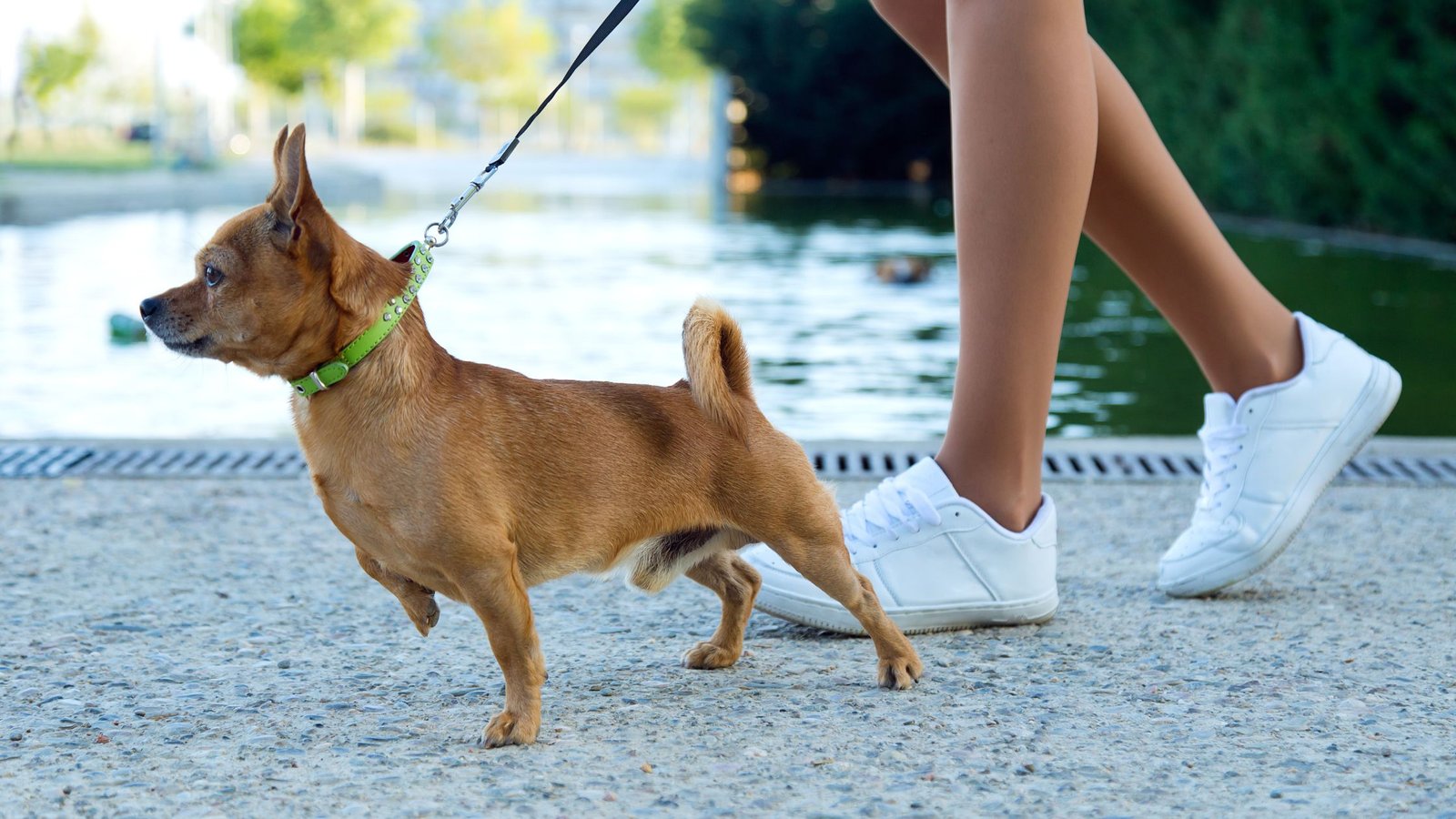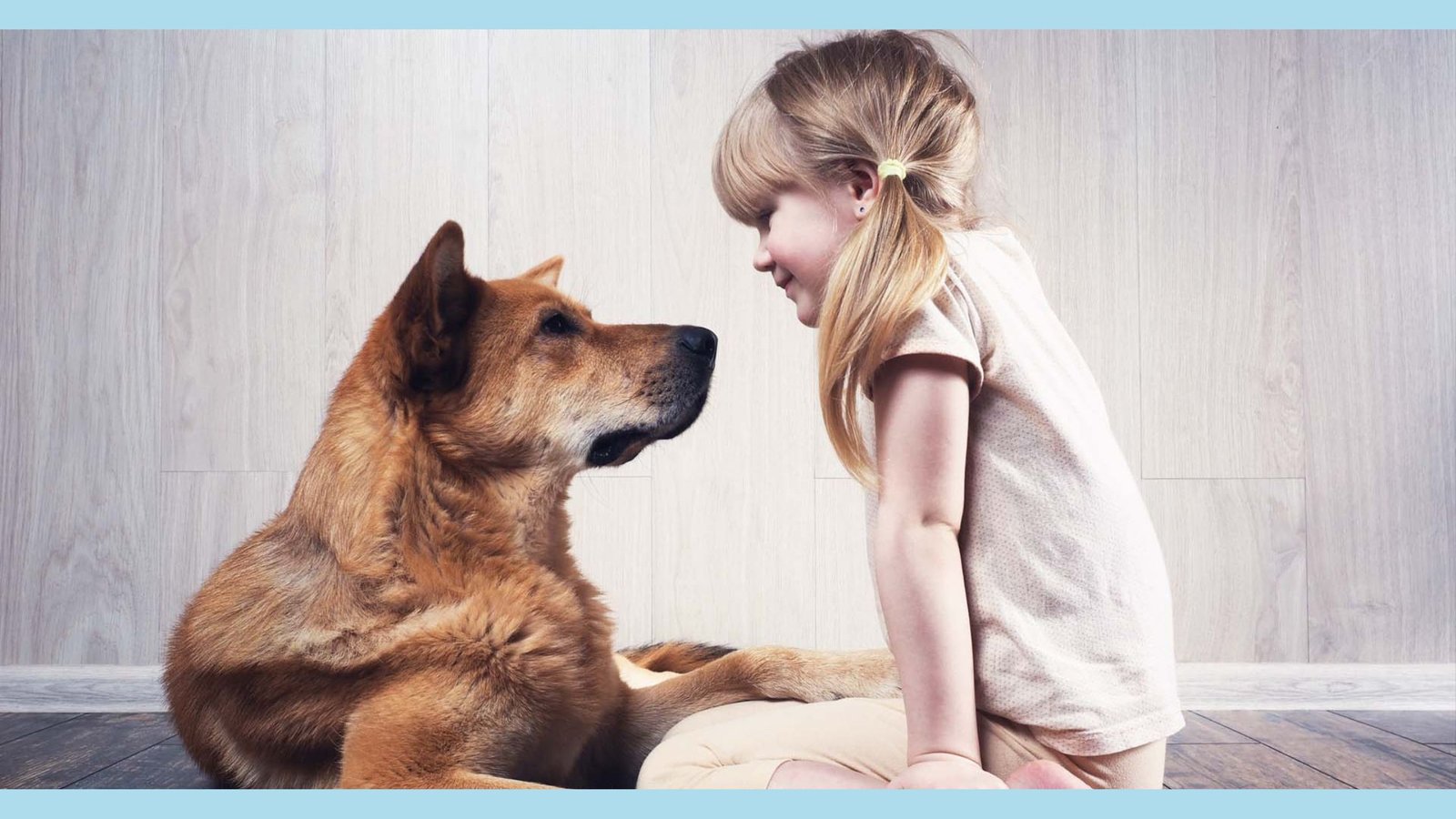Taking your furry friend for walks is an excellent way to bond and stay active. However, if your dog constantly pulls the leash or lags behind, it can be frustrating and even unsafe. By following these steps, you can train your dog to walk calmly by your side.

HOW TO TRAIN YOUR DOG TO WALK WITH SAME STEP AS YOU?
What Steps To Take When You Train Your Dog To Walk With You?
- Start by teaching your dog the “heel” command. This command tells your dog to walk next to you, on your left side. You can teach this command by holding a treat in your left hand and walking forward. When your dog walks next to you, give them the treat.
- Once your dog knows the “heel” command, start practicing in a quiet environment. Use a short leash and keep your dog close to you. If they start to pull ahead or lag behind, give them a gentle correction.
- Gradually increase the length of your walks and the distractions in your environment. As your dog gets better at walking with the same step as you, you can start walking in more crowded areas or with more distractions.
- Be patient and consistent with your training. It may take some time for your dog to learn how to walk with the same step as you. But if you’re patient and consistent, they’ll eventually get the hang of it.

TRAIN ROOM TIPS TO TRAIN YOUR DOG TO WALK IN STEP
You can find much more information on this topic if you visit out TRAIN ROOM for online dog training, from the comfort of your home and for free as well! So, we recommend to finish this article and then visit our room.
What Tools You Need to Train Your Dog to Walk The Same Step With You?
- Use a harness instead of a collar. A harness will help to distribute the pressure evenly across your dog’s chest, which can make it less likely that they’ll pull ahead. They also offer better control.
- Utilizing a retractable leash isn’t advisable. These leashes grant your canine companion too much freedom. That can hinder their training progress to walk in sync with your pace.
- Be mindful of your body language’s impact. If you’re striding rapidly or erratically, your dog will likely mirror that behavior. Maintain a steady gait and consciously exhibit calm, composed movements.
- Positively reinforce your pup’s desired conduct. Whenever your furry pal walks harmoniously beside you, offer praise or a tasty treat. This reinforces the notion that synchronizing strides earns rewarding outcomes.
- Make training sessions fun and rewarding. Incorporate your dog’s favorite treats, toys, and praise. Positive reinforcement motivates them to learn.
- Consider taking a group obedience class. Professional trainers can provide valuable guidance and socialization opportunities for your pup.
- Stay patient and positive. Training takes time and effort, but the bond you’ll build with your canine companion makes it worthwhile.
With patience, consistency, and positive reinforcement, you can teach your furry friend to walk calmly by your side, making your daily strolls more enjoyable and safe for both of you.

We suggest viewing the instructive video below from Zak George’s renowned Dog Training Revolution series. It provides invaluable guidance to refine this vital skill successfully.
Undeniable Advantages of Instructing Your Dog to Walk in Unison
Regularly walking your four-legged friend is an integral aspect of responsible pet ownership. Yet, the quality and overall experience of these outings can vastly differ. Teaching your loyal companion to walk in lockstep with you can transform routine strolls into truly enjoyable, stress-free adventures for you both.
Within this insightful article, we’ll explore the multitude of benefits associated with training your canine to maintain a harmonious stride alongside you, while offering invaluable insights into mastering this crucial aspect of dog training successfully.

THE PIVOTAL IMPORTANCE OF PROFICIENT LEASH CONDUCT
Proper leash training constitutes an essential component of responsible dog ownership. Not only does it safeguard your furry friend’s well-being, but it also ensures that daily walks become positive, pleasurable experiences for both you and your four-legged companion. By reinforcing proper leash etiquette, you cultivate a strong foundation for a well-behaved, obedient pet who respects boundaries and responds readily to your guidance.
Why Training Your Dog to Walk in Step Matters
Ensuring your dog’s safety and maintaining control are crucial reasons for training them to walk in step. When your furry friend walks by your side, you gain better command over their actions. This proves invaluable in potentially risky situations, like near heavy traffic or other animals. With proper guidance, you can swiftly respond and keep your pup secure.
Beyond safety, walking together strengthens the bond you share with your canine companion. Each stride creates shared experiences, fostering mutual trust – the cornerstone of a healthy, harmonious pet-owner relationship. As you navigate your neighborhood side by side, your connection deepens, allowing you to understand and communicate with your dog more effectively.
Well-behaved walks can mitigate undesirable behaviors in dogs. Regular, structured walks provide an outlet for pent-up energy and anxiety. By engaging your pup in this routine activity, you can help alleviate excess restlessness, leading to a calmer, more obedient demeanor at home. A tired, content dog is less likely to engage in destructive habits or excessive barking.
Training Techniques for Walking in Step
Investing in appropriate gear is the first step. Choose a leash and collar that fit your dog comfortably yet securely. Ensure the collar isn’t too tight or too loose, allowing for safe control without causing discomfort. Some dogs may benefit from a harness, especially those prone to pulling on the leash.
Positive reinforcement is key to successful training. Use treats and verbal praise to reward your dog when they walk beside you. Offer small, tasty snacks and use phrases like “good dog” to reinforce their understanding of desired behavior. Consistent encouragement strengthens the association between walking in step and receiving rewards.
Consistency and patience are vital throughout the training process. Set aside dedicated time each day for walks, ensuring your pup receives regular practice. Correct undesirable behaviors immediately, but remain patient, as mastering this skill takes time. Reward positive behavior consistently, and your dog will soon associate walking in step with a pleasurable experience.

THE ENJOYMENT OF WELL-BEHAVED WALKS
Walking in step with your dog offers numerous benefits beyond just training. It’s a bonding experience, allowing you to enjoy quality time together while exploring the great outdoors. You’ll both relish the fresh air, sights, and sounds of your neighborhood, creating cherished memories along the way.
The Peace of Mind Knowing Your Dog is Under Control
Well-behaved walks also provide excellent exercise for you and your furry friend, promoting physical and mental well-being. Regular walks can help maintain a healthy weight, reduce stress, and improve cardiovascular health for both humans and canines. Plus, you’ll have the peace of mind knowing your dog is under control, allowing you to fully embrace the joy of your leisurely
Walking with your furry friend while they remain in step is an ideal scenario. It prevents excessive tugging, allowing a more pleasant stroll. Additionally, your pup appears friendlier, welcoming positive interactions with others.
Furthermore, well-behaved walks reduce canine anxiety and restlessness. Your dog returns home content and relaxed, having enjoyed the experience. A calm, happy pup is the ultimate reward.
The Rewards to Train Your Dog to Walk in Same Step with You
Training your beloved pup to walk in step offers numerous benefits. It enhances safety by preventing bolting after distractions, deepening your bond through shared experiences. Behavioral issues like jumping or barking diminish as well.
With consistent training using positive reinforcement techniques like treats and praise, you’ll enjoy well-behaved walks together. This strengthens your relationship while creating a happier, healthier pet.
Investing time to train this valuable skill pays dividends. Each successful walk reinforces the training, leading to a harmonious partnership. Your furry friend learns to trust and obey you, deepening your connection. Ultimately, walking in step creates cherished memories of joyful strolls together.
JUMP IN OUR STORE TO EQUIP YOURSELF BEFORE THE TRAINING LESSONS!










